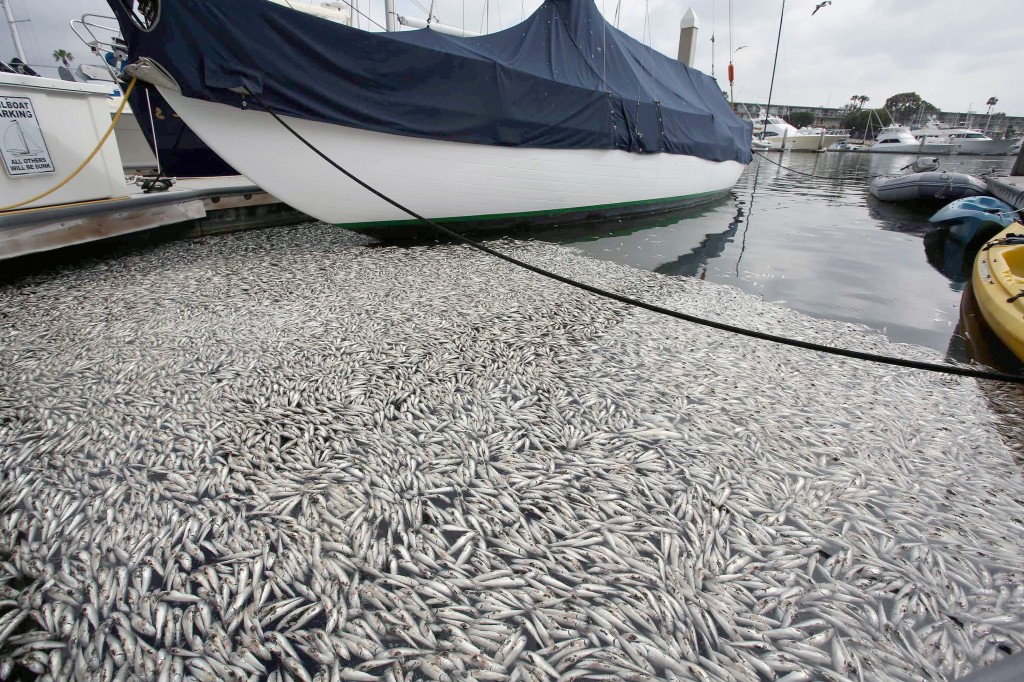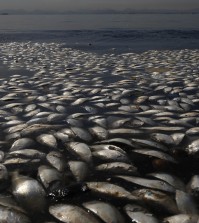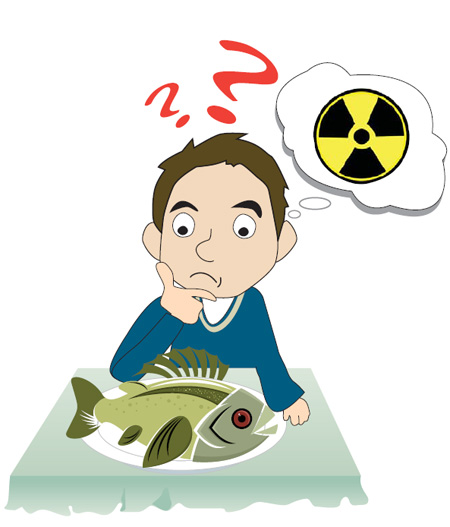- California Assembly OKs highest minimum wage in nation
- S. Korea unveils first graphic cigarette warnings
- US joins with South Korea, Japan in bid to deter North Korea
- LPGA golfer Chun In-gee finally back in action
- S. Korea won’t be top seed in final World Cup qualification round
- US men’s soccer misses 2nd straight Olympics
- US back on track in qualifying with 4-0 win over Guatemala
- High-intensity workout injuries spawn cottage industry
- CDC expands range of Zika mosquitoes into parts of Northeast
- Who knew? ‘The Walking Dead’ is helping families connect
Thousands of dead fish wash up in Marina del Rey

Thousands of dead fish wash up along boat slips at the Marina Del Rey, Calif. on Monday, May 19, 2014. The Los Angeles County Sheriff’s office said the dead anchovies, stingrays and even an octopus rose to the surface at a section of the harbor Saturday evening. Marine biologists believe a lack of oxygen in the water, caused by this week’s heat wave, may have led to the massive fish kill. (AP Photo/Nick Ut )
MARINA DEL REY (CNS) - Last week’s heat wave may have been the reason why thousands of dead fish rose to the surface of a section of Marina del Rey near Ballona Creek, an environmental scientist said today.
The fish, which included anchovies, rays and other species, surfaced at Basin A of the marina, which is near Bora Bora Way, according to a deputy at the sheriff’s Marina del Rey station.
Neighbors starting calling the station at about 7 p.m. on Saturday.
The reasons behind the die-off are being investigated by the California Department of Fish and Wildlife.
Heal the Bay’s Dana Murray, a marine and coastal scientist, said she believes the hot weather was the cause.
“My guess is … that these anchovies died from low dissolved oxygen levels,” Murray told Video News West. “Basically we had thousands and thousands of fish occupying a very small area … There is less oxygen for them to live.”
She said that although there is probably nothing that could have been done to directly prevent the die-off, smarter development around coastal areas and protecting marine areas could help.
“Our shorelines are right along the habitat that sustains these populations,” Murray said. ”Fish already face stressors from pollution, climate change and from rising sea levels and temperatures … If we create areas that are protected that lessen some of those human-induced stressors, marine life has a better chance of surviving into the future.”
Seagulls and sea lions were making a feast of the the kill this morning and at least one fisherman gathered some of the dead creatures to use as bait.
The Los Angeles County Department of Beaches and Harbors was cleaning up the fishy mess.
Carol Baker, a department spokeswoman, said crews were able to clear around 90 percent of the fish that died Sunday but more fish showed up overnight.
“We are not sure if this is continuing to be a dynamic situation or not,” Baker said. ”Only time will tell. We will continue to be here and clean up as much as we can.”
She said that crews are cleaning out the main thruways of the harbor but some fish have floated into the dock areas around the boats and those will be the hardest to clean up.
“At that point, I think we are going to need some additional help going into there,” Baker said.
Similar kills have occurred in King Harbor in Redondo Beach and Ventura Harbor in Ventura. In those cases, the fish were used as fertilizer.















